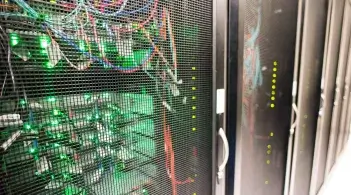About AI at UVM
Overview
AI is becoming an increasingly common part of teaching, research, and administrative work at UVM. This site offers a starting point for exploring what AI is, how it’s being used across campus, and what thoughtful, responsible use can look like in different contexts. Whether you are beginning to explore AI or integrating it into your work, you will find resources here to support your learning and decision-making.
AI is evolving quickly, and so are our conversations about how to use it well. This site will continue to grow along with our community’s understanding and needs.
Definitions
Artificial Intelligence is a broad, interdisciplinary field that focuses on designing systems that are capable of performing tasks that typically require human intelligence, such as perception, reasoning, learning, and decision-making.
Machine Learning (ML)
ML is a subfield of AI that develops algorithms and statistical models enabling systems to improve their performance on a task through data-driven learning, rather than relying on explicitly programmed rules.
Deep Learning
Deep learning is a subfield of machine learning that uses multi-layered artificial neural networks to learn hierarchical representations from large volumes of data.
Generative AI
Generative AI encompasses models and systems designed to produce novel content, such as text, images, audio, or code, that is coherent, plausible, and often indistinguishable from human-generated outputs.
AI Agents
AI agents are systems that perceive their environment, make decisions, and take actions to achieve specific goals. They can range from simple rule-based programs to complex autonomous entities that adapt their behavior over time based on feedback, learning, or changes in their environment.
Innovations and discoveries in the field of artificial intelligence. AI Research at UVM
Considerations and Responsibilities
As AI tools become increasingly accessible, it is important to consider how we can use them thoughtfully and ethically in our various roles at UVM. Below are some guiding ideas and considerations drawn from ongoing discussions within higher education.
Academic Integrity: AI is a powerful tool that can be used for learning, productivity, and creativity. Being transparent about when and how you use AI tools, such as ChatGPT, can help maintain trust and clarity in academic work. This transparency supports the spirit of academic integrity.
Privacy and Data Protection: Many AI systems store and process user inputs, so it is wise to avoid sharing any personal, confidential, or sensitive information. If you wouldn't feel comfortable emailing it to a stranger, it's best not to enter it into an AI system.
Transparency: When AI is involved in your work (whether writing, coding, analysis, or planning), it is helpful to let others know. Clear communication makes it easier to understand what parts of a project were human-driven and what was AI-assisted.
Ethical Use: AI can support your work, but it shouldn’t replace thoughtful judgment or be used to mislead. AI-generated content can also contain bias and error, so it is important to consider how this may affect your conclusions, decisions, or the people impacted by your work.
Ongoing Learning: AI is changing rapidly. Staying curious and informed helps us all engage with these tools in more meaningful and responsible ways. Keep an eye out for learning opportunities on campus and beyond.
Effective Date
October 31, 2024


